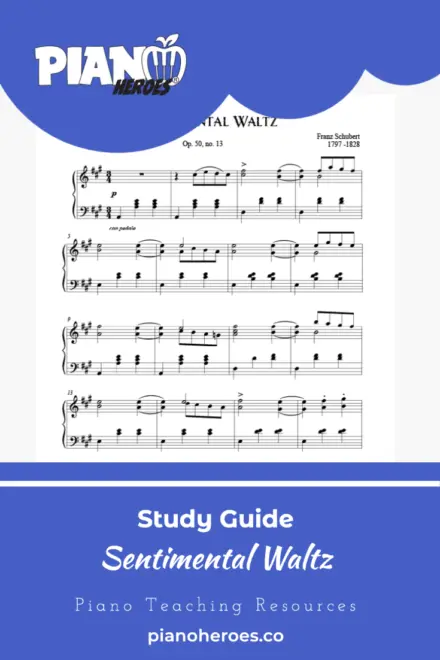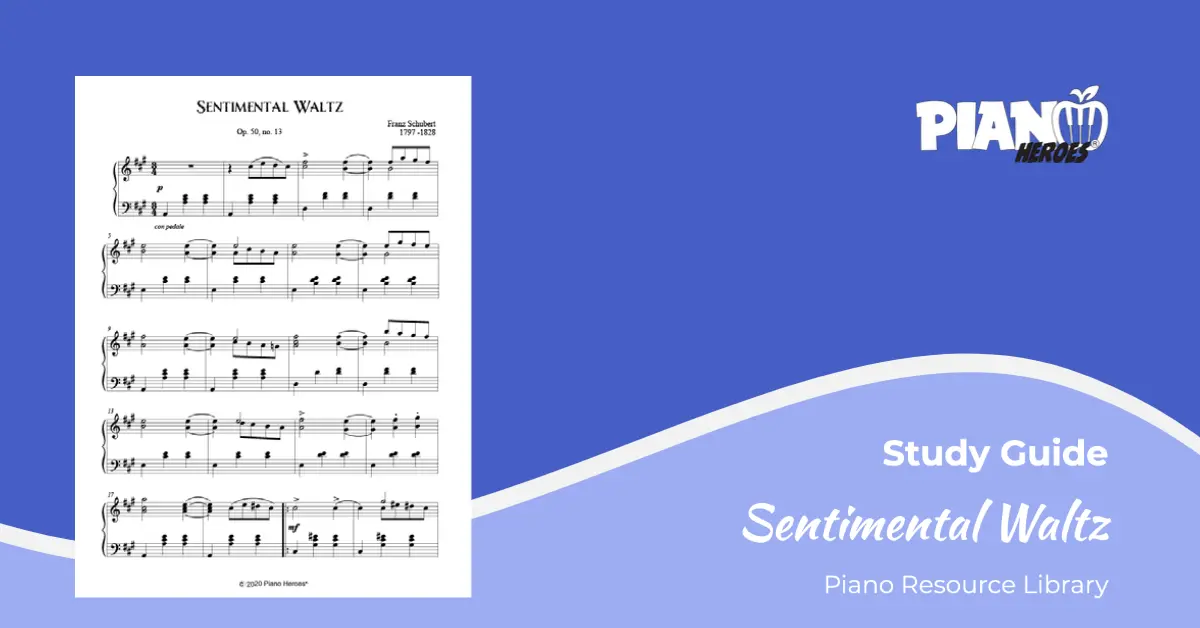The holidays went by and the winter term lessons are in a full swing. RCM January Piano Exam is a good milestone to start a new year. For me, it is also a time to make plans and set goals for my students. For that reason, I am sharing my Study Guide for Sentimental Waltz by F. Schubert, RCM Level 6. It is a general plan to prepare, present, practice, and polish the piece effectively.
Insights into the work
Insights into the work contain three major elements that help with the exploration of all of the aspects of the music piece. This is usually done in the first lesson.
Getting to know the genre – By asking the questions What is Waltz? Can the student name the musical characteristics of the waltz? Can the student name the waltzes learned before?
Style Exploration – Brief presentation of the composer’s work is aimed to let the student know that during his life Schubert was well-known for his music for piano and songs, all of which were performed in intimate salon settings. Schubert’s waltzes were written in a romantic style.
Listening – After listening to Schubert’s Waltz introduce the student to one of the following pieces for comparison and discovering common and unique style characteristics.
- Frédéric Chopin, Waltz in A minor, op. post.
- Edvard Grieg, Waltz, op. 12, no. 2
- Samuil Maykapar Waltz, op. 28, no. 5
Imaginary – For the homework ask the student to find and watch the waltz videos to initialize the understanding of the movement, pace, and plasticity of the waltz. Propose to choose one favourite video and come up with three reasons why this waltz is a student’s favourite.
Score analysis
The score analysis can be done over a few lessons, or at the first lesson. It depends on the student’s personal studying habits.
Structure – Propose the student to identify the part of the score and name which components characterizes that part, e.g. key signature, rhythmic pattern, accidental appearance, melody repetitions, etc. Also, ask the student to compare the parts for finding similarities.
Left-hand challenge – Ask the student to describe the left-hand movement to determine big leaps between the lower note and the following chord. Help the student to come up with a strategy on how to practice to overcome that challenge.
Rhythm – choose an 8 – 12 measure excerpt and propose to the student to tap the rhythm of the right-hand while taping the steady beat with the foot.
Dynamics – the teacher asks the student to analyze the dynamic of the piece and it is connected to the genre and character of the piece.
Accidentals – Challenge the student to analyze the harmony of the whole piece with special attention to measures 19-28 to explain many accidental appearances and to mark the repetitions.
Memorization plan
Establishing structural memory – While reviewing the harmony canvas of the piece emphasizes the fact that measures 1-18 and 29-38 consist of tonic, subdominant and dominant chord movement, while measures 19-28 are based on C sharp and G sharp major chords. On a separate piece of paper draw a harmony map using the colour pencil crayons.
Engaging aural memory – To secure the left-hand leaps and harmony memorization, ask the student to practice the left hand alone while humming the melody or hearing the melody in his head. The preliminary exercise for this practice can be “ghosting playing” – playing the left hand as written while playing the right hand silently (without pressing the keys).
Improving tactile memory – For the homework, propose practicing the piece in a different tempo. For example, very slow then very fast and after in regard to the original tempo marking, to strengthen touch memory and break unaware, thoughtless playing.
Reinforcing visual memory – Ask the student to mark the part of the music with appearing accidentals (measures 19-28) with the dot stickers or washi tape and propose to study that part away from the piano by carefully looking at the score one measure at a time. Then closing his eyes and trying to see and hear that measure in his head.
For the full edition of Schubert’s Waltzes’ follow these link.
Pin for Later


